Berlin Fashion Week autumn/winter 2025 was an act of defiance
Women, immigrants and the LGBTQIA+ community responded to the fraught geopolitical climate with their catwalk shows
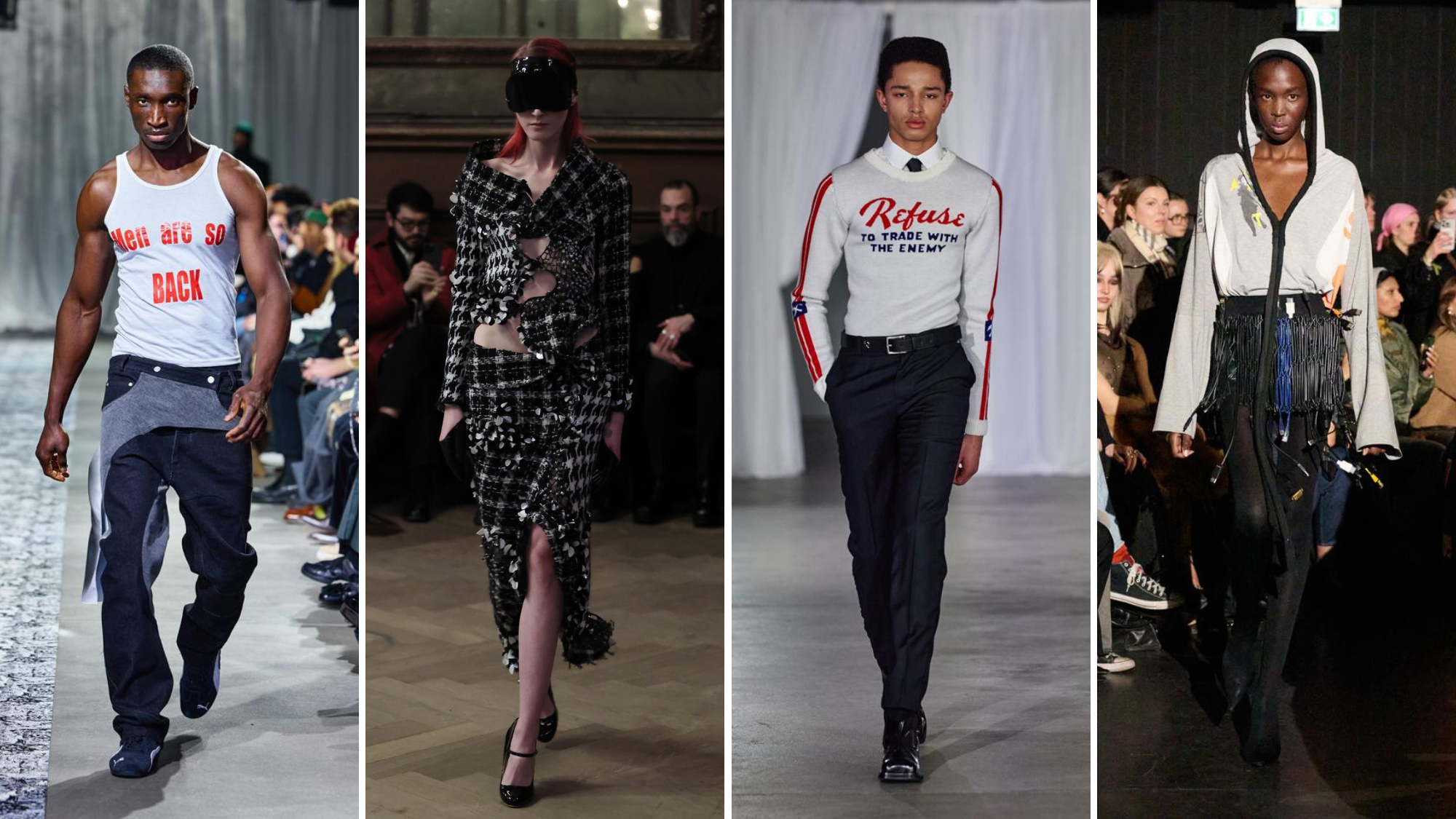
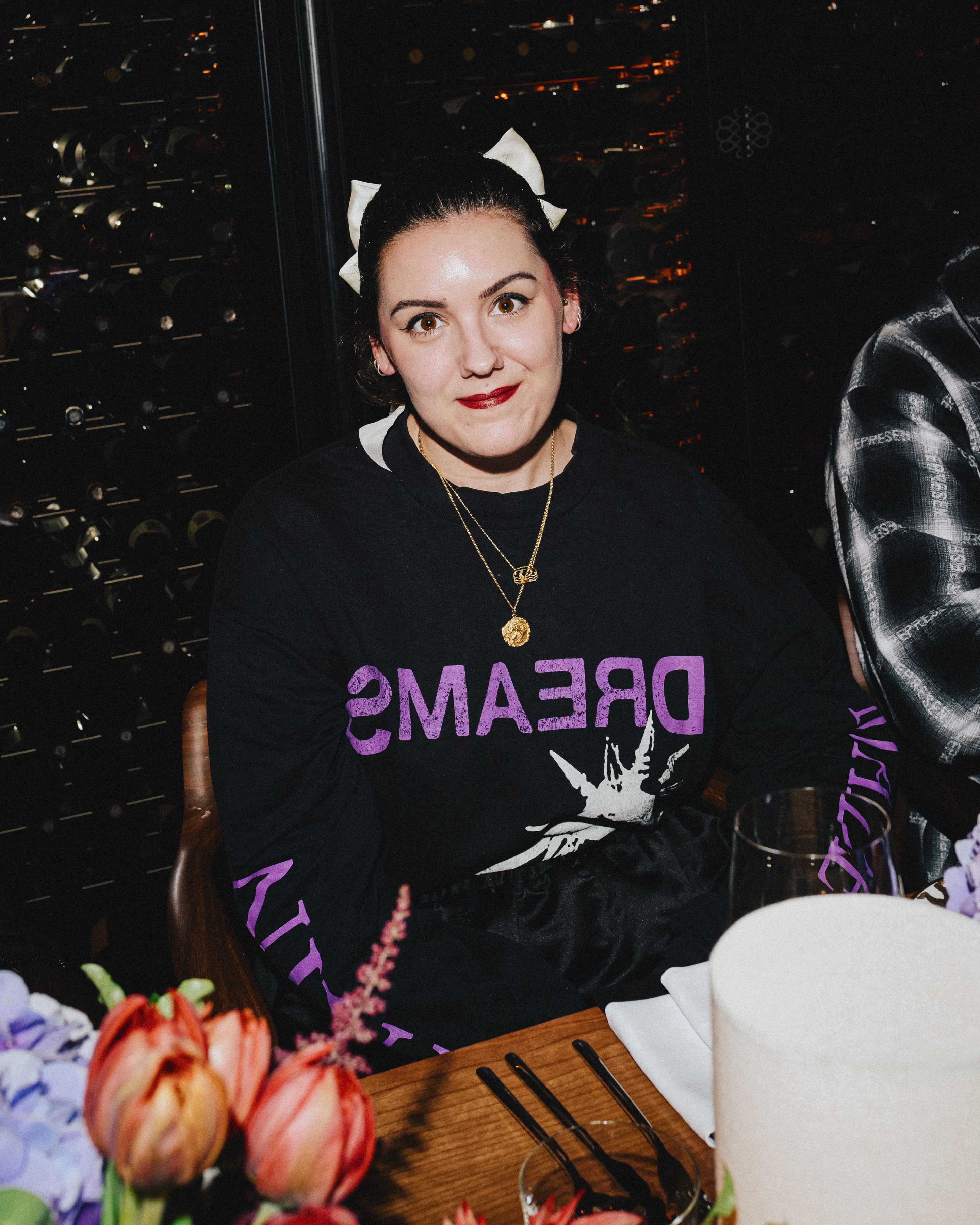
Berlin Fashion Week might have been around since 2007, but the internal shake-ups over the past few years have seen its recognition grow on an international scale — and rightly so.
The fashion week operated without a formal fashion council until 2015, when the Fashion Council Germany was formed, and it took over from Mercedes-Benz as the main sponsor in 2022. Now, under the direction of CEO Scott Lipinski, the event has a strong focus on new talent, sustainability and inclusion. Last June, Berlin was the first fashion week to adopt Copenhagen Fashion Week’s Sustainability Requirements — something that London Fashion Week went on to do as of last month.
What the council is able to achieve in terms of supporting the diverse roster of designers is largely made possible by financial funding from the state. At the opening dinner for the AW25 season last Friday, Franziska Giffey, Mayor of Berlin and Senator for Economic Affairs, Energy and Public Enterprises, announced that €4million from the government had been invested to make the event possible.
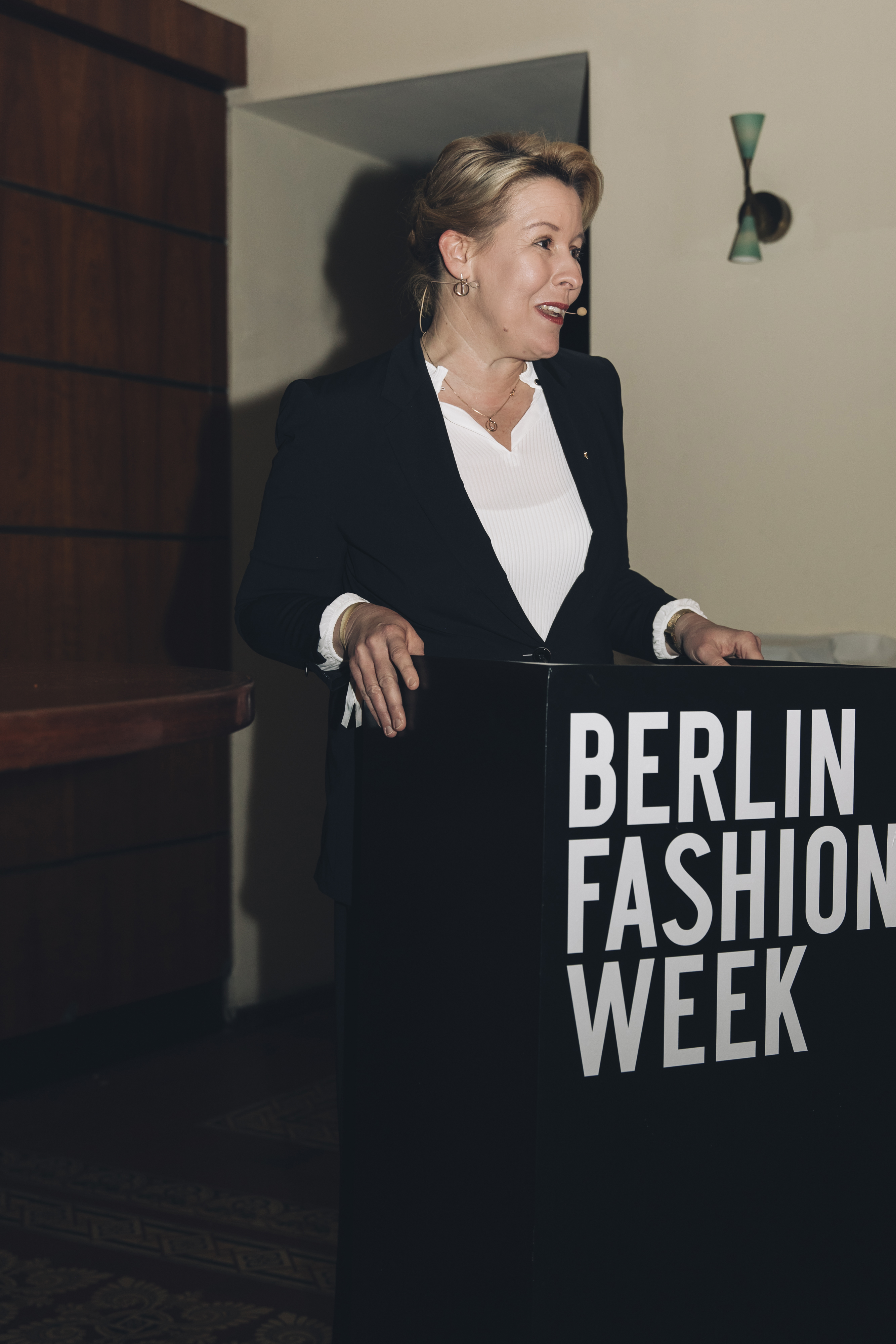
The benefits of this could be felt throughout the week — even designers presenting their debut collections were able to do so in grand, spacious locations, beyond the realm of possibility in cities like Paris and London. This season, once again, renowned communications agency Reference Studios presented their Intervention format, taking over a multi-story car park to play host to some of the most anticipated shows on the schedule such as Kasia Kucharska, Marie Lueder and GmBH, as well as brand pop-ups from Ugg and Levi’s.
Below, I’ll take you through some of the stand-out shows from the four day event. With the most exciting designers on the schedule being women, immigrants and/or part of the LBGTQIA+ community, a running theme was to defiantly reject Donald Trump’s America, which has become a symbol for far-right, intolerant attitudes and toxic masculinity across the world.
Sia Arnika
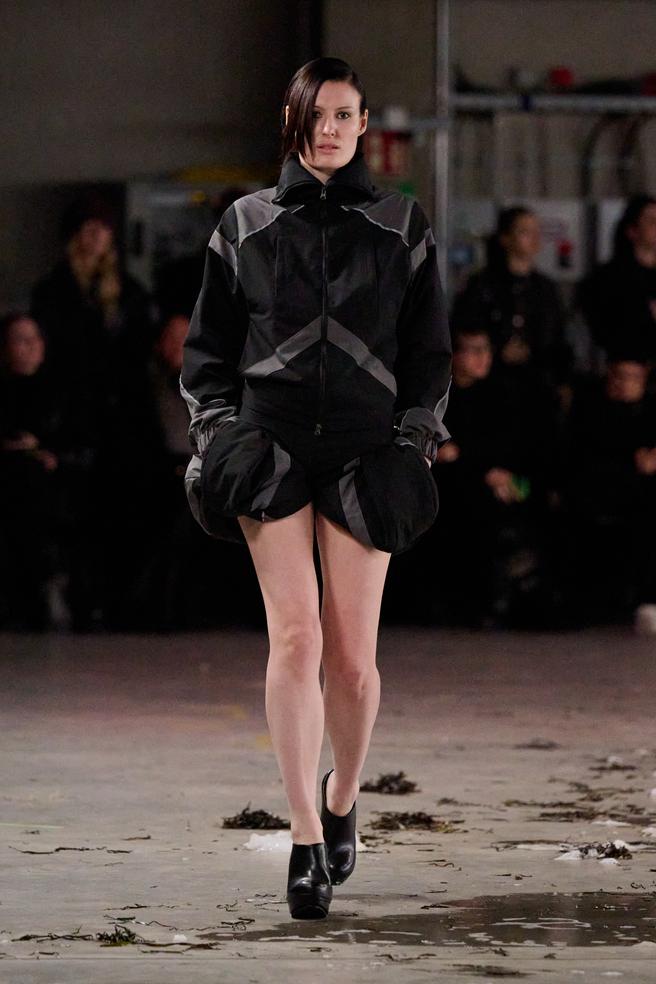
2024 was a big year for Danish designer Sia Arnika. Charli XCX wore a full look of a slashed white T-shirt and micro hot pants from the brand’s spring/summer 2025 collection for her star-studded, much-photographed 32nd birthday party. Then, in November, Arnika partnered with Kylie Jenner’s label Khy on a capsule collection, which starred Jenner herself and it-girl model Amelia Gray in the campaign. Reflecting on the experience backstage at her AW25 show, Arnika said: “It was amazing because the last collection was really where I cemented what it is that I want to do as a designer. I was really honest with myself, and I got a great reaction overall. After Charli, it [the brand] really went everywhere…it was a pretty good past year!”
Arnika is a regular on the ‘one to watch’ list from press, buyers and industry insiders alike, and her AW25 show didn’t disappoint. Entitled ‘Harbour Bitch’ and set in a giant warehouse strewn with seaweed (harvested by her parents and brought to Berlin from Denmark for the occasion) and slippery sea foam (created with soap), models walked a treacherous path in sky-high boots and clogs with curved, fisherman hook-shaped heels.
Marie Claire Newsletter
Celebrity news, beauty, fashion advice, and fascinating features, delivered straight to your inbox!
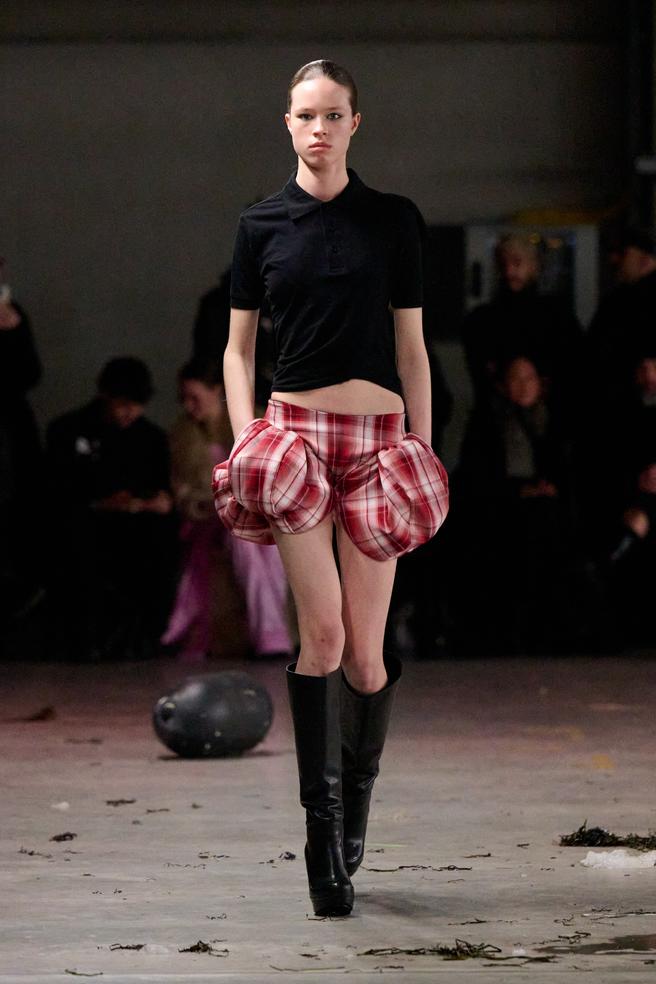
She explained: “The whole concept is built around this childhood memory I have of a factory worker. I come from a small island in the north of Denmark that’s very known for its fish and its sea food, and there always used to be this factory worker that was living in the town, and she was just a little bit too sexy, a little bit too fierce. So I created this narrative around her as a menace — all of the kids were fearful of her and all of the men were lusting after her”.
When asked about why she chooses to show in Berlin, Arnika replied: “I moved here 12 years ago — I studied and then I started working for Ottolinger straight after school, and I just feel the most at home here. We get the funding from the senate to actually be able to pull off a show like this. The community of creatives in Berlin is amazing, and I trust everybody in my team immensely”.
Kitschy Couture
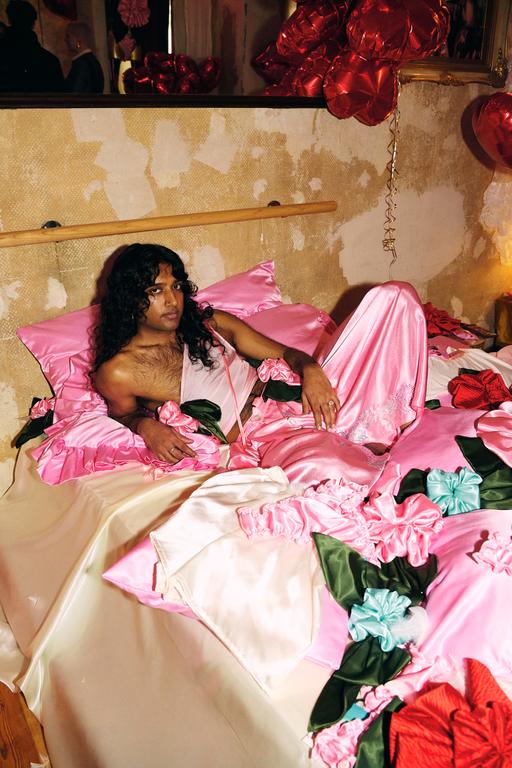
Abarna Kugathasan hosted a Valentine’s Day themed presentation for her label Kitschy Couture for AW25. She scaled back the show format for this season ahead of launching the brand’s online store, yet still filled a room with foil heart-shaped balloons, a giant bed (complete with a satin clad model atop) and ruffled, colourful lingerie, all immersing her community into her intimate, fantasy world. A young brand, Kugathasan founded Kitschy Couture as a result of wanting to talk about “my immigrant background and how I see my cultural identity”.
This ethos has resonated, as Kugathasan is another BFW designer making an impact on the global stage. Last September, she created a pink, rose-embellished custom dress for SZA to wear to the BMI R&B/Hip-Hop Awards. Speaking at her AW25 presentation, she said: “It was super crazy — her stylists reached out to us not long after fashion week [SS25]. As tends to be the case in fashion, I got a message about a week before the deadline saying they needed the dress tomorrow, so we had to make it work!” She explained that “the whole team stayed in the studio for 27 hours straight to finish the dress” before sending it off and seeing the results in a video Sza posted on Instagram.
Lou de Bètoly
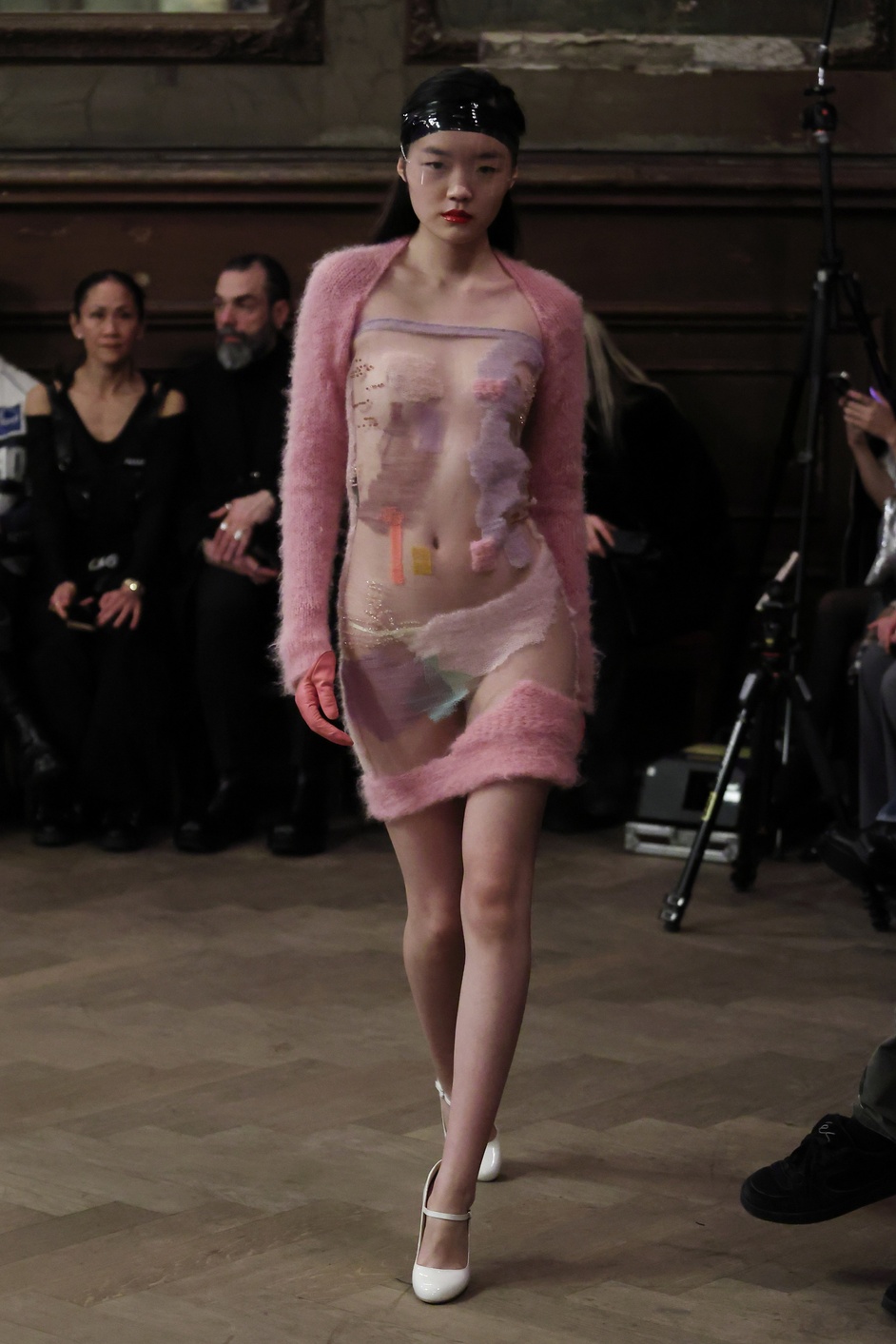
Lou de Bètoly is a French designer who lives and works in Berlin. She explained backstage that she shows at BFW just once a year, as her work is focussed on “intricate handwork and detail”. “I’m also trying to stay consistent with some themes and inspirations that I work with, for example upcycled underwear — they appear again and again but in different ways,” she said. “For me, what is interesting when you have a brand, is to develop one language. So I feel like I’m repeating the same things, but always with a different phrasing”.
Her show on Saturday night was a masterclass in craftsmanship and seamlessly unnoticeable upcycling — figure hugging silhouettes constructed from lace and mesh were embellished with jagged, glinting shards of orange and red, which turned out to be bicycle reflectors that Bètoly had sourced over a three-year-period on her walks from home to work. “I have a very intuitive way of working — I always start with the materials and then build the story around those first pieces”.
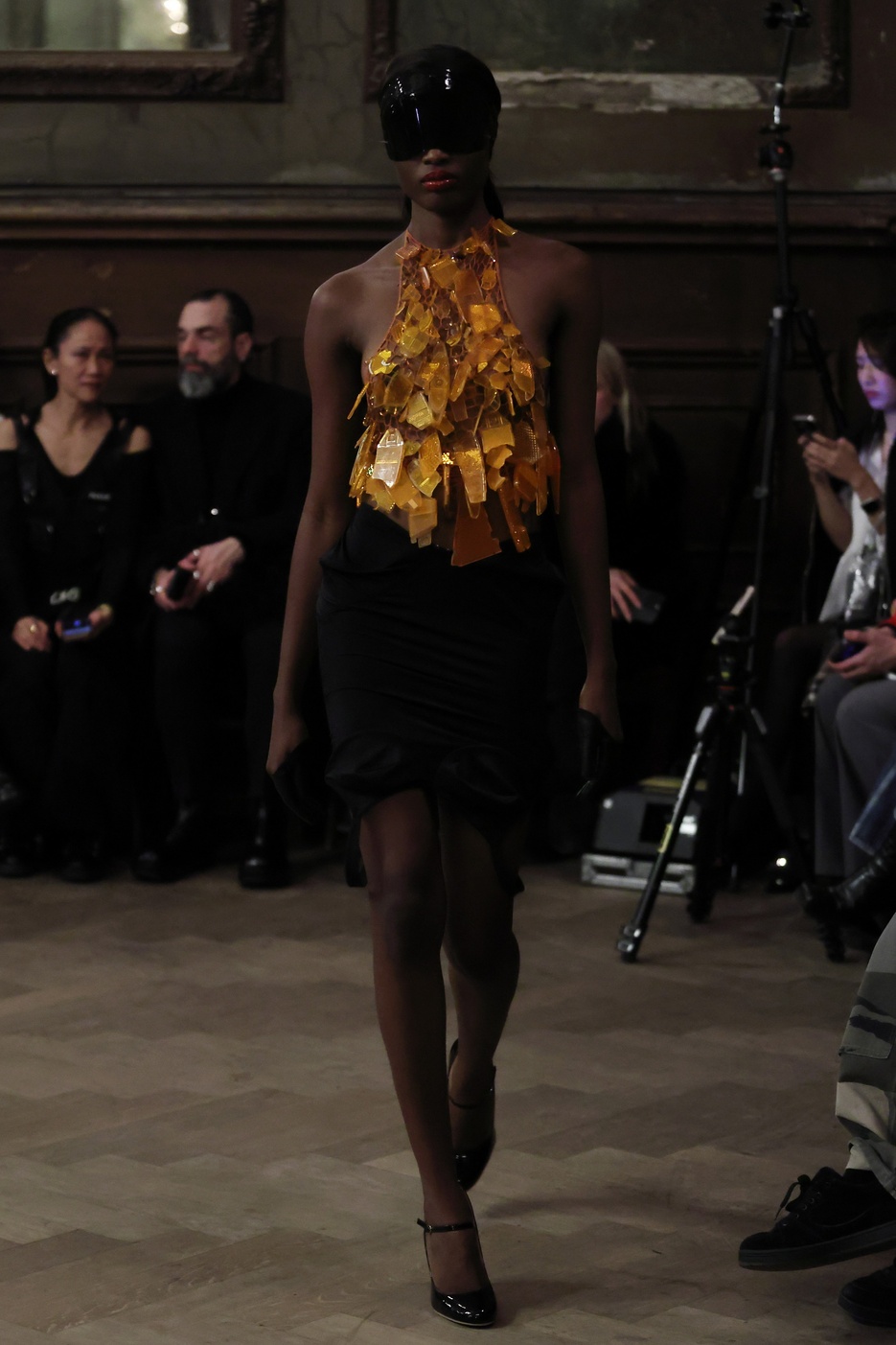
When asked why she shows in Berlin, Bètoly replied: “I moved from Paris in 2011 and what is interesting in this city is that it [fashion week] is not as established as in other cities. There are a lot of creative people and there is a vibe that is very different — it’s nice to have a mix of different inspirations and we are like sponges, soaking up everything”.
Kasia Kucharska
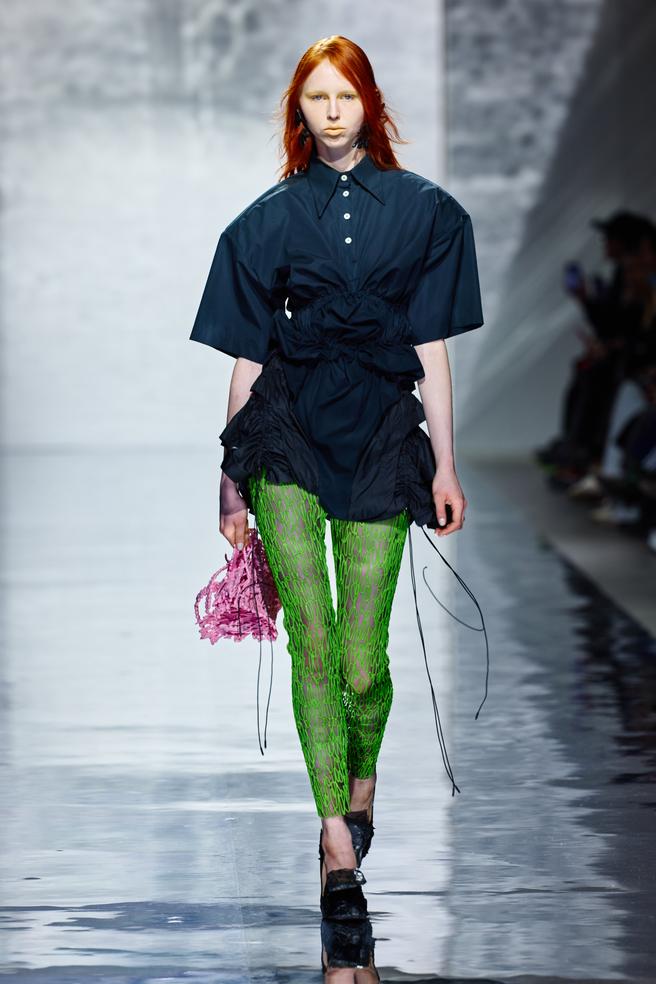
Last year, designer Kasia Kucharska won the first Vogue Fashion Fund to be awarded in Germany. After beating off fierce competition, it’s safe to say that all eyes were on her for the brand’s debut catwalk show at the Intervention space on Sunday afternoon. Kucharska has made a name for herself with a unique use of biodegradable latex, manipulating the material into her now signature squiggly designs that are inspired by lace. She told journalists backstage that she would be using the prize money from the Vogue Fashion Fund to patent her designs and the technique she has developed to create them.
The AW25 collection featured dresses without any stitching, being manufactured and linked solely with latex. Alongside her stand-out handbags were deconstructed argyle jumpers, ruched shirts and billowing overcoats, accessorised with latex coated flat-peak caps and stiletto heels. The overall aesthetic had a whiff of nu-rave, emphasised by the bright colour palette and booming electronic soundtrack, for “an intelligent twist on what it means to be confident and sexy today”.
Lueder
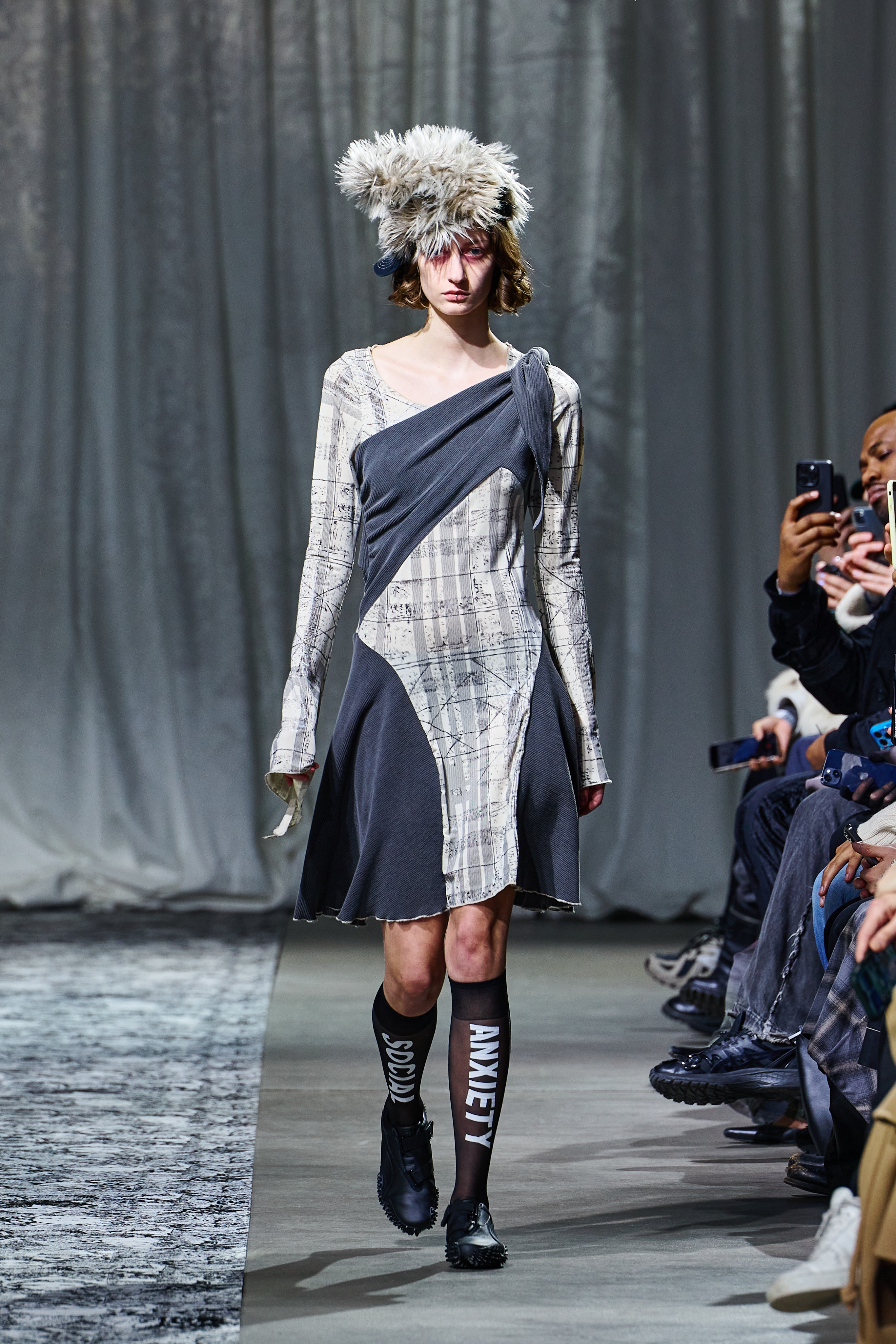
Marie Lueder made her debut at London Fashion Week last season, where she showed as part of the New Gen scheme. She also made her debut as part of the Berlin Contemporary (BFW’s equivalent of New Gen) last year, being represented by Reference Studios and their Intervention initiative. As a German designer living in London, she straddles both cities and infuses their attitudes into her historical-streetwear mash-up designs. Her AW25 show featured a long antique-looking carpet, screen-printed with her team’s faces in order to appear “haunted”, accompanied by giant bat-like drones that rose up and down throughout its duration.
Speaking at a re-see appointment, Lueder told Marie Claire that her starting point was a trip to Scotland, specifically to Dumfries House. “All the carpets, tapestries and wallpaper” became prints that featured across several garments in the collection. “This idea of camouflage became interesting to me. Then I thought about home being a prison, like when you’re a teenager and making music in your bedroom on Fruity Loops when you want to move to a big city and get away from your parents.” She said when putting the show together, she wanted to find a way to “mingle this coming of age story with angst for the future, which is why we had the drones. Like in a David Lynch film, they created a subtle yet weird, horrible and unsettling sound”.

The biggest talking point from the show was a white vest emblazoned with the words “Men are so back”. Lueder explained her reasoning behind the slogan: “It’s part of the horror, basically — being worried about a specific type of heteronormativity being back. As a summary, I’ll say Donald Trump because that’s the worst thing that has come back, and he’s changing so many things already and rolling back so many improvements”. She’s quick to point out she’s obviously in no way supportive of this return. “I wanted to provoke a conversation about it. I don’t have answers and I don’t know what to do, but I wanted to get that discomfort out there somehow.”
Clara Colette Miramon
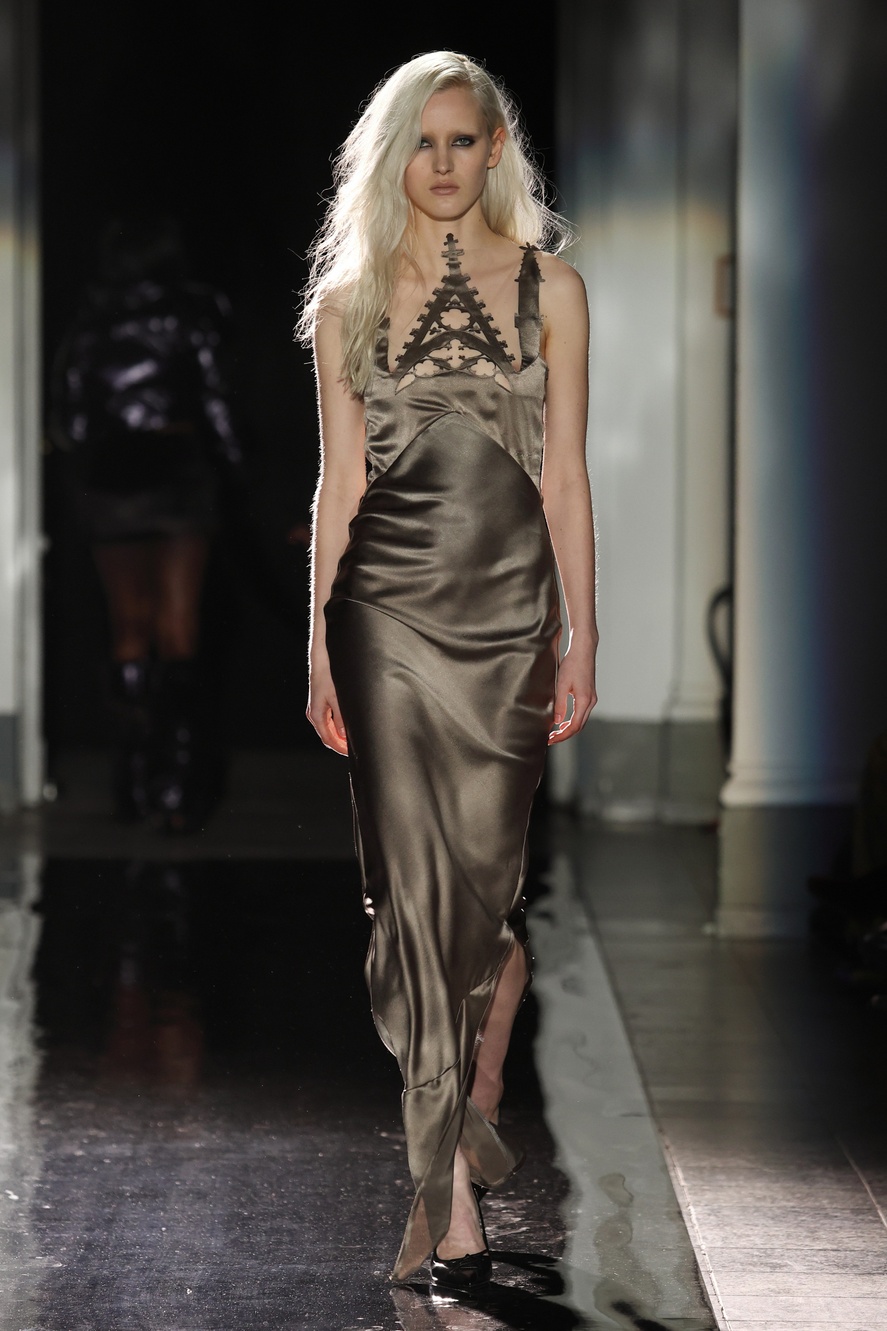
Clara Colette Miramon took guests to a cavernous dark church for her AW25 show. Entitled ‘Maria hat geholfen’ the show’s name translates to ‘Mary helped’ and refers to a South German tradition where people leave gifts at the local churches in thanks for their prayers being answered. The collection had obvious religious references, including a giant sacred heart puffer jacket, which were then combined with a dark and sexy colour palette. A pregnant model closed the show, dressed as a “goth bride” with a trailing black veil. At a re-see appointment, Miramon said: “I was inspired by depictions of Mary with child or the pregnant Mary — I was looking at motherhood and how mothers are seen and represented in society, and wanted to explore how they maintain their identity when moving into that phase of their life”.
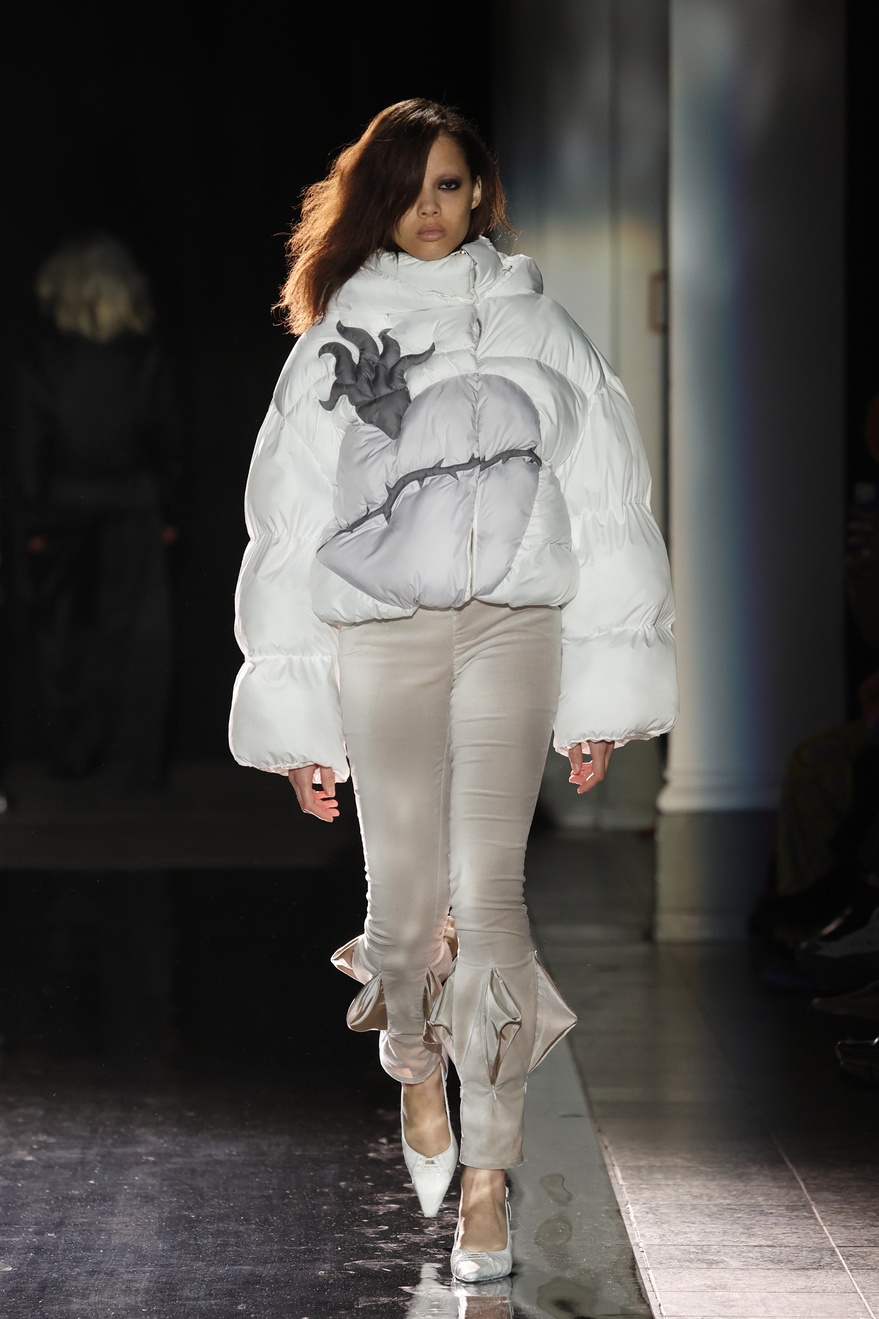
Miramon’s work is centred around femininity. She explained: “It’s always about highlighting these different facets. I think about different women or girls that I know and the conversations that we have inspire me so much. It’s always so reflected in clothing in general, what kind of woman you are and which part of your femininity you’re exploring in that moment”. Showing at Berlin Fashion Week for her is “so cool. There’s so much support here for young designers and also being part of a bigger community who are showing something new, in a new city, and getting access to the international fashion industry. They [Fashion Council Germany] are doing such an amazing job.”
GmbH
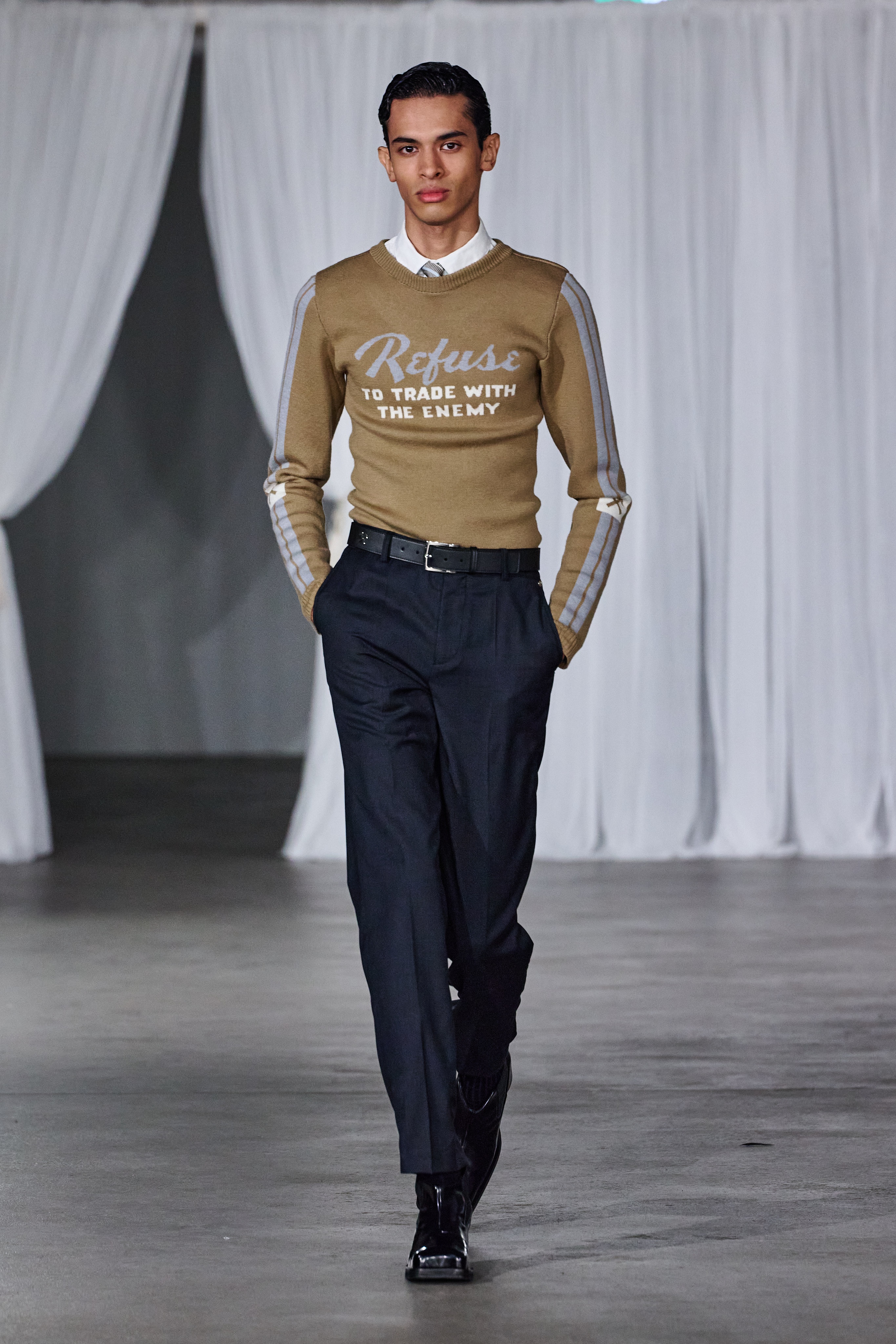
Last year, menswear label GmbH shifted from showing in Paris to their native Berlin. Founders Benjamin Alexander Huseby and Serhat Isik started the brand in 2016, born from the city’s world-renowned clubbing scene but interwoven with their heritage as children of immigrants. For AW25, the package of detailed show notes left on guest’s seats stated: “In serious times — and we are living in very serious, terrifying times — fashion can seem frivolous. Our response could only be serious, as we take our work very seriously. But what are serious clothes? Clothes of mourning?” In an attempt to find the answers, the duo explored their brand’s archive to find comfort in past ideas. Strong tailoring and workwear influences ran throughout the collection (the show notes included images of both founder’s fathers as inspiration) but perhaps the most provoking pieces were two knitted jumpers emblazoned with the words “Refuse to trade with the enemy”.
Andrej Gronau
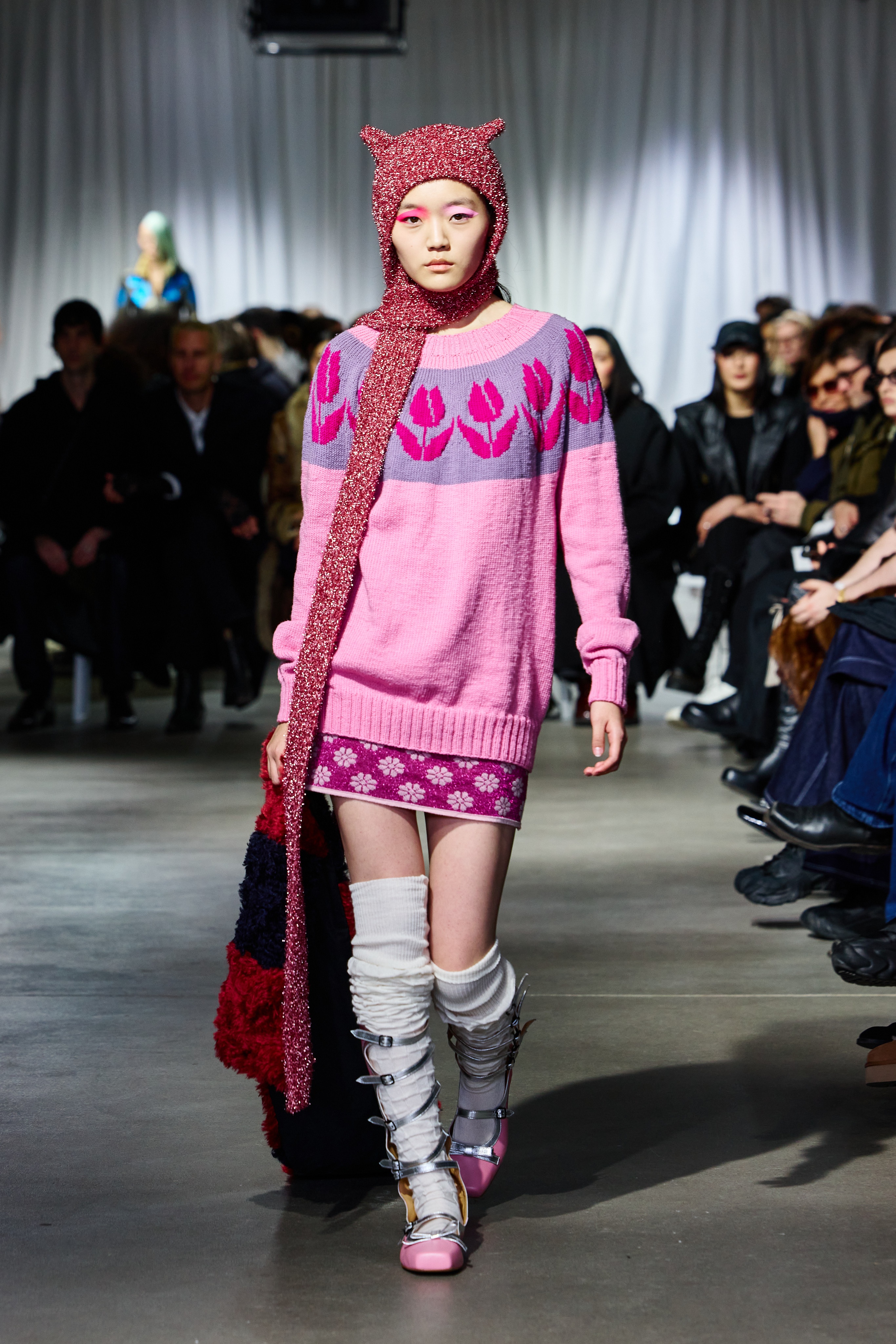
Andrej Gronau is a graduate of Central Saint Martins, who founded his eponymous label in 2022. You’ve probably seen his star cut-out boots on many a fashion-girl’s feet (aided by stockist SSENSE) and his designs are rooted in gender fluidity and playfulness. For AW25, Gronau explained backstage that he had been looking at “kitsch tchotchkes — it’s a Slavic word for things we collect at home in domestic spaces that have sentimental value. Things like a small figurine we may have bought on vacation, or tinsel from last Christmas”. These influences could clearly be seen in the designs, such as glittery bonnets with animal ears, bow adorned jumpers and metallic star-appliqued leather jackets. A floral motif ran throughout the collection, which Gronau explained he took from “a vase I have at home and also the carpets my grandma used to hang as a decoration on the wall”.
For Gronau, this was his debut show. Why did he choose Berlin? “It has become a new place for emerging designers and there’s a lot of support. When we do collections, we show them twice a year in Paris [at a showroom] but it’s very hard to do runway shows of this scale in a town like Paris, especially as it’s already so full of amazing designers.” He continued: “Berlin is kind of home, because I’m German myself, so why not have my debut here?”
Laura Gerte
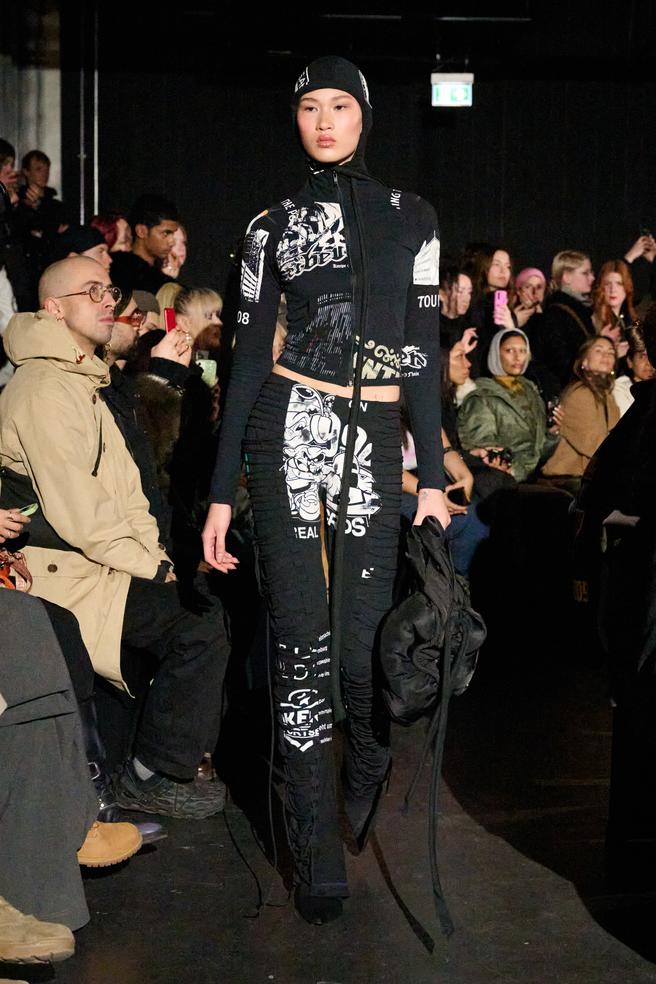
Laura Gerte was the last brand to show at Berlin Fashion Week AW25, making her debut on the schedule. Taking guests into a disused shopping centre, who had to walk up broken escalators, and then be seated around a circular, metal platform with dangling cables and cords, it all felt rather dystopian — which was exactly the point. The collection was inspired by Donna Haraway's 1985 essay ‘A Cyborg Manifesto’ and the 1995 anime ‘Ghost in the Shell’. Speaking backstage after the show, she said: “I was reflecting on the dichotomy between humans and machines, natural and artificial, and how these contrasts in our life can reflect into clothing.” She then continued: “The question we are asking ourselves is can we use platforms like Instagram anymore when they are presented and owned by people who clearly don’t align with our values?”
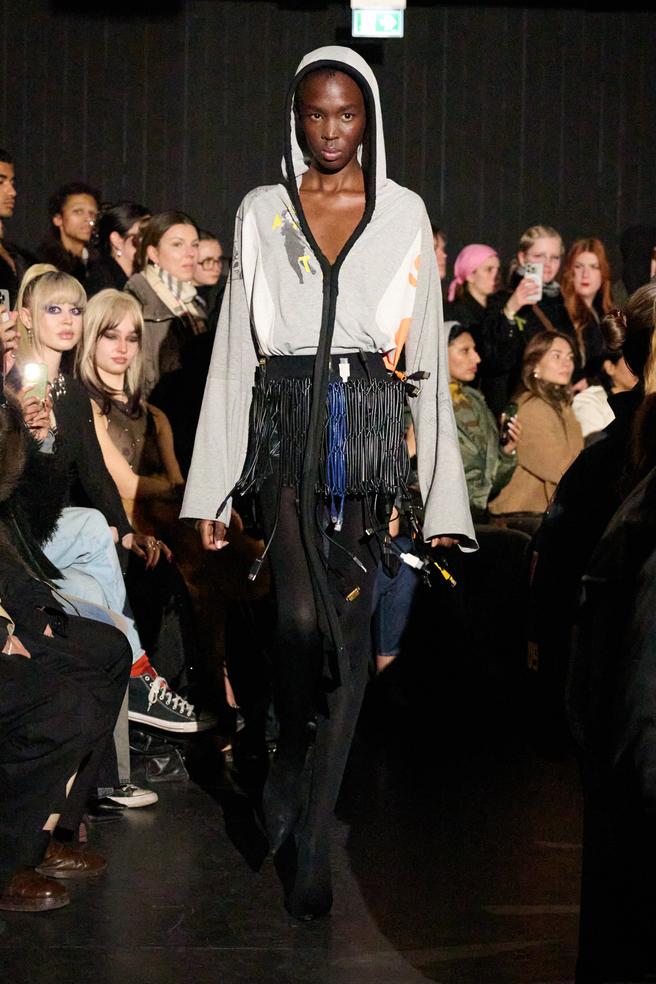
Models wore hooded tops and dresses constructed from upcycled T-shirts and jerseys, with long cords that trailed around their necks and behind their legs as they walked. Skirts and handbags were also made from layers of cables and wires, yet managed to look totally “confident, casual and sexy” — how Gerte describes her women. As they all gathered underneath the circular structure, music blaring and lights flashing, it felt as though Gerte had captured the very essence of Berlin in her show.
She said: “Emerging brands get amazing support from the government and through that, get the opportunity to show their creative vision which otherwise wouldn’t be possible. I’m very happy and grateful that I can now be a part of it”.
Richert Beil
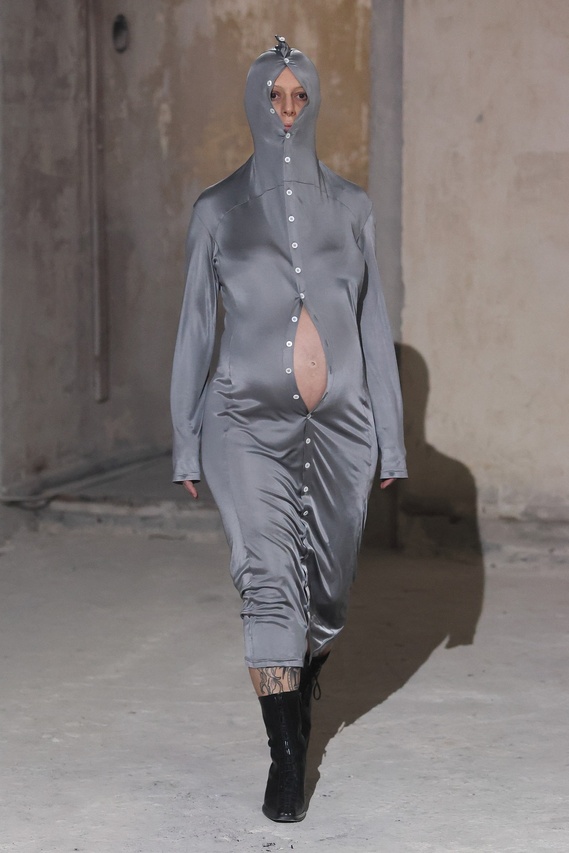
A baby’s cry echoed throughout a cold, crumbling building to mark the start of Richert Beil’s AW25 show ‘Mutter’ (translating to Mother). The design duo Jale Richert and Michele Beil used the concept of exhausted, overburdened mothers as a metaphor for our fatigued and overwhelmed society. Visual references — such as shirts and garments stretched over the head and unbuttoned slightly to reveal the face or a pregnant belly, jugs of milk and mother-daughter model combinations — all served to symbolise a world struggling under the weight of constant pressures and the relentless pace of modern life. Sounds familiar, right? “Invisible labour” was another theme which ran throughout, whether that be of a mother’s work or of balancing societal, professional, and familial expectations. The largely black and white collection featured latex, leather and wool fabrics in sharp, tailoring silhouettes that were remarkably wearable.

Rebecca Jane Hill is a freelance fashion editor and stylist. She is the former fashion editor at Drapers, and has contributed to publications such as Elle, Refinery29, Stylist, Glamour, The Face, Dazed, Bricks, and Riposte. She has also worked with brands such as Dr Martens, Gucci and Calvin Klein across strategy, consultancy and creative direction.
-
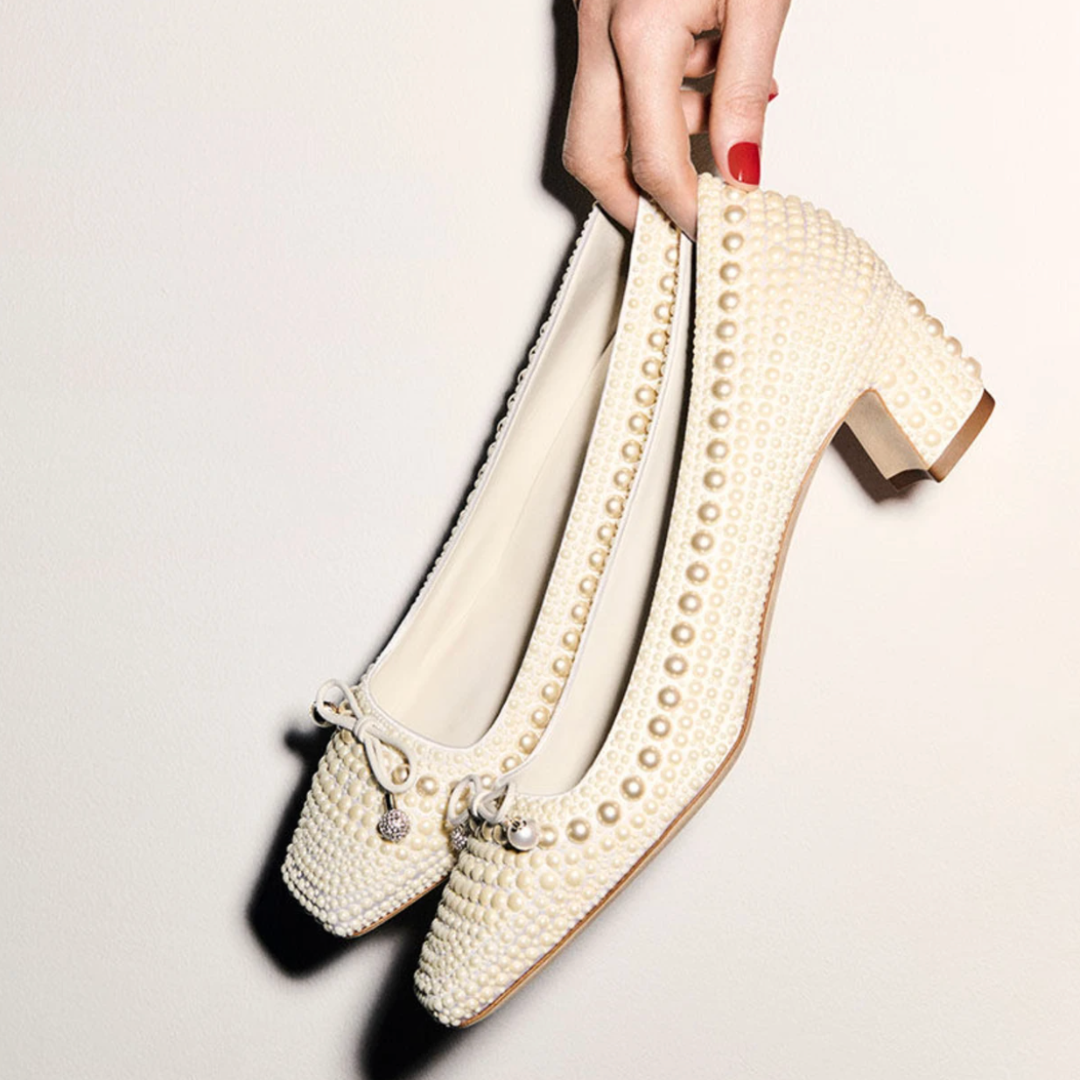 These are the best wedding shoes you'll want to walk down the aisle in
These are the best wedding shoes you'll want to walk down the aisle inSomething new, something blue
By Lauren Cunningham
-
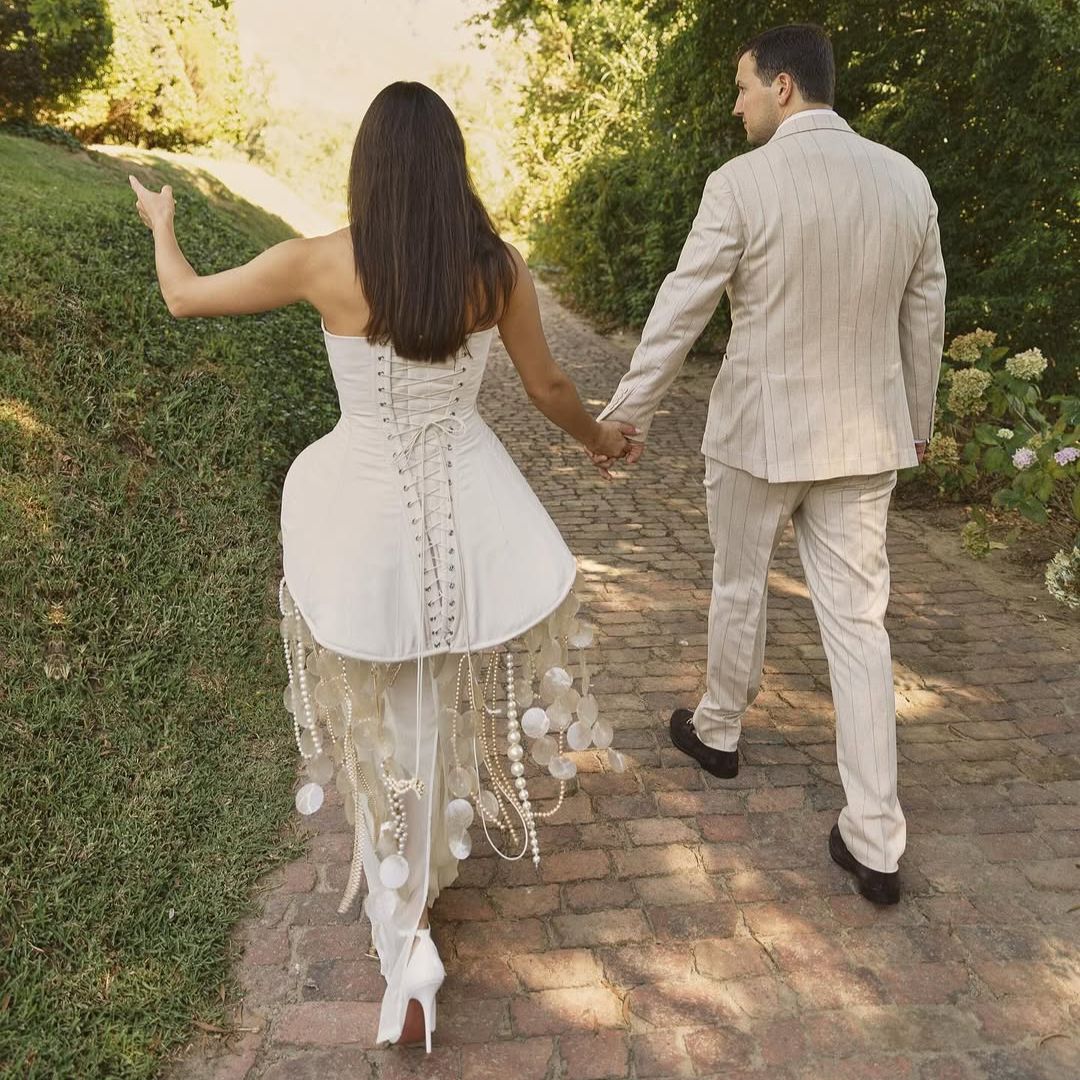 The best wedding dresses for every bridal style and budget
The best wedding dresses for every bridal style and budgetThese are the standout gowns of 2025
By Lauren Cunningham
-
 Learning to code could be your next big career move – here’s how to get started
Learning to code could be your next big career move – here’s how to get startedBy Jenny Proudfoot